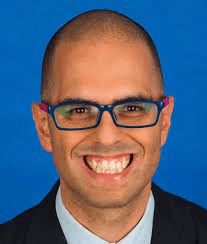A consultation paper seeks feedback on a plan to fund NSW emergency services via a levy on property, rather than insurance, and asks whether councils should be responsible for collecting the new charge.

The state government says it is looking for a new, more equitable way of leveraging the ESL, which funds the SES, the RFS and FRNSW.
At present the funding comes from insurance companies (73.7 per cent), local councils (11.7 per cent) and the state government (14.6 per cent).
Premier Chris Minns announced last year the government intends to remove the ESL from insurers, saying it’s making insurance too expensive for many.
The consultation paper released this week is seeking feedback on possible models to create a more sustainable system that will spread the costs across property owners.
Costs of natural disasters expected to blow out
NSW Treasury projects that the total cost of flood and bushfire to the economy will increase from $7 billion in 2020-21 to up to $24 billion per year by 2070-71, in today’s dollars.
“With natural disasters becoming more frequent, intense and unpredictable, the need for emergency prevention and response is growing,” Treasurer Daniel Mookhey said in a statement on Wednesday.
“Finding a sustainable, broad and fair system is vital to ensuring the best emergency services to protect everyone.”
Implications for councils
There’s no specific proposal in the discussion paper to remove or vary councils’ share of the burden, which has been an ongoing bone of contention for the sector and which LGNSW says will represent a collective liability of $77 million for the state’s 128 councils in 2023-24.
However, the paper does raise the question of whether a new, broad based property levy, should be collected by local governments or by the State Government via Revenue NSW.
“Local governments collect council rates, which are levied on unimproved land values,” the paper says.
“Councils have established systems for billing, collecting rates, and collecting debts. Local governments could include a notice of a replacement levy assessment as part of their council rates assessment notices.”
But it notes councils use a range of different software and platforms, and says changing these systems to deal with a replacement levy could add costs and complexities for local governments.
The paper also notes that Revenue NSW is the State’s primary revenue collection and debt recovery agency.
“It could collect a levy using one integrated system to issue levy bills and refer to debt recovery when required. The implementation and ongoing operations may be simpler without the need to coordinate and conduct assurance activities with 128 councils.”
LGNSW was considering its position in relation to any role it would play regarding the introduction of an emergency services property levy, a spokesman told Government News.
A spokesman for Treasurer Daniel Mookhey said the government wanted to hear from all stakeholders.
“Everything is up for discussion,” he told Government News.





Leave a Reply